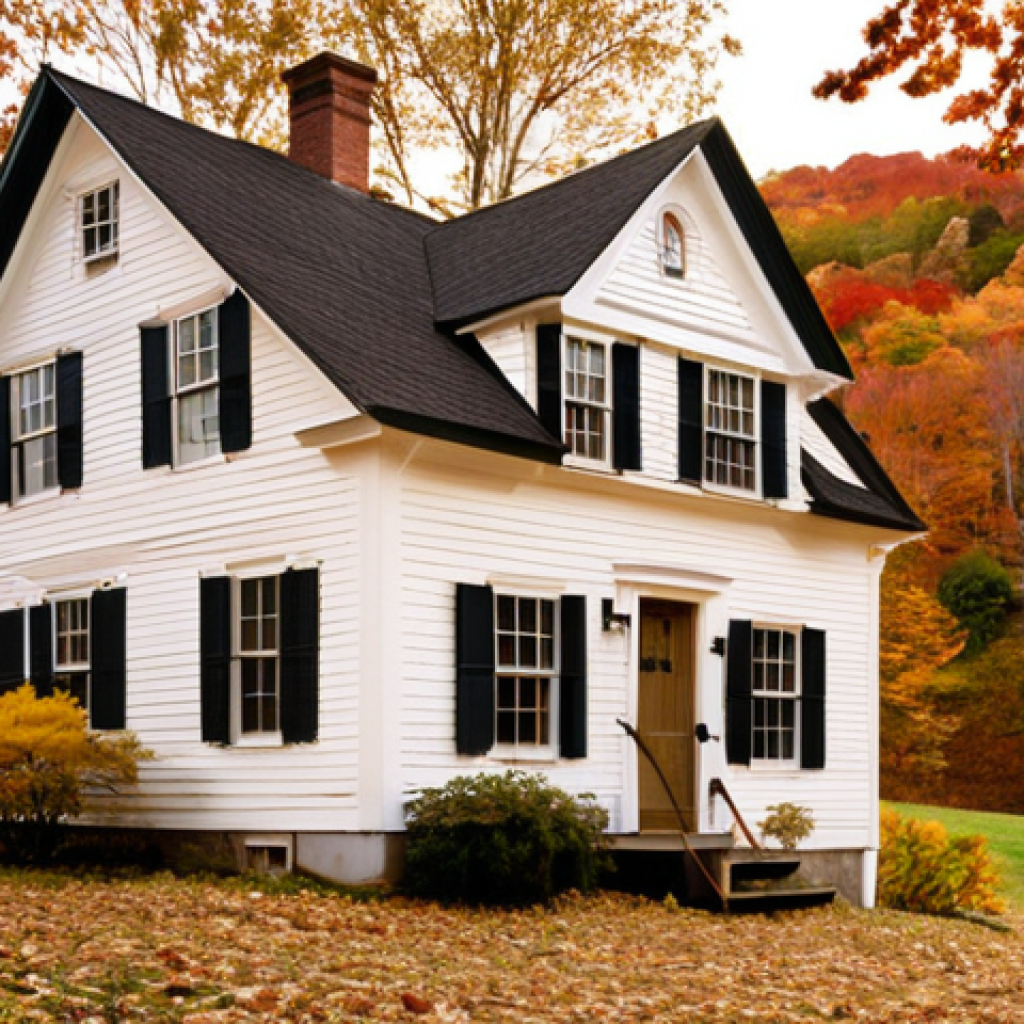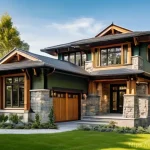Okay, here’s a blog-style introduction about traditional house construction cases, written in English as requested:Stepping into the world of traditional home construction is like opening a time capsule.
From the meticulous planning to the hands-on craftsmanship, these projects are a beautiful blend of art and engineering. I’ve always been fascinated by how these homes manage to be both timeless and perfectly suited to their environments, often incorporating sustainable practices long before they became trendy.
The resurgence of interest in these building styles, especially with modern eco-consciousness, is exciting. People are looking for that connection to heritage while embracing innovations.
Now, let’s delve deeper into a specific construction case study to appreciate the nuances. We’ll accurately investigate more!
## Crafting a Foundation: Site Selection and PreparationSelecting the ideal site for a traditional home is a crucial first step. It’s not just about finding a plot of land; it’s about understanding the environment, the local climate, and how these factors will influence the building process and the home’s longevity.
Evaluating the Landscape

Before laying the first brick, a comprehensive evaluation of the landscape is essential. Consider the soil type – is it stable enough to support the structure?
Are there potential issues with erosion or water runoff? I once visited a site where the soil was primarily clay, which required extensive drainage solutions to prevent water damage.
Considering Climate Conditions
Climate plays a significant role in the design and construction of a traditional home. For instance, in areas with heavy rainfall, a steeply pitched roof might be necessary to efficiently shed water.
In hotter climates, passive cooling techniques like strategic window placement and the use of light-colored materials can help keep the interior comfortable.
When I visited Arizona, I saw houses oriented to minimize sun exposure, which dramatically reduced the need for air conditioning.
Respecting Local Regulations and Traditions
Navigating local building codes and regulations is a must. These rules often dictate what materials can be used, the size and height of the structure, and other important aspects of the construction.
Additionally, it’s wise to respect local building traditions. Incorporating elements that are common in the area can not only add to the home’s aesthetic appeal but also ensure that it fits harmoniously with its surroundings.
I found that in New England, many homeowners insist on clapboard siding to maintain the region’s historical charm.
The Art of Material Selection: Authenticity and Sustainability
Choosing the right materials is pivotal in traditional home construction. The materials not only define the aesthetic of the home but also impact its durability, energy efficiency, and environmental footprint.
Prioritizing Natural and Local Materials
Opting for natural and locally sourced materials is a hallmark of traditional construction. This can include timber from nearby forests, stone from local quarries, and clay for bricks and tiles.
Using local materials reduces transportation costs and carbon emissions, while also supporting the local economy. I remember touring a home in the Appalachian Mountains where the entire structure was built using timber harvested from the property itself.
Understanding Material Properties and Durability
Each material has unique properties that must be considered. For example, wood is known for its warmth and natural beauty, but it requires proper treatment to prevent rot and insect damage.
Stone is incredibly durable and fire-resistant, but it can be more expensive and labor-intensive to work with. The key is to choose materials that are well-suited to the local climate and that will stand the test of time with proper maintenance.
Balancing Tradition with Modern Innovations
While traditional materials are essential, there’s also room for modern innovations. For instance, incorporating energy-efficient windows and insulation can significantly improve the home’s thermal performance without compromising its traditional aesthetic.
The goal is to strike a balance between authenticity and sustainability, creating a home that honors the past while embracing the future.
Design Elements that Echo History
Traditional homes have unique architectural details. Understanding these elements is important for preserving their aesthetic and functional integrity.
Roof Designs and Their Significance
Roof design is a defining feature of traditional homes. Gable roofs, hip roofs, and gambrel roofs each have their own unique appearance and advantages.
For example, gable roofs are simple and effective at shedding water, while gambrel roofs provide additional attic space. When I visited Charleston, South Carolina, I was struck by the prevalence of hipped roofs, which are well-suited to the region’s hurricane-prone climate.
Window and Door Styles: More Than Just Openings
Windows and doors play a crucial role in the overall design of a traditional home. Casement windows, double-hung windows, and arched doorways can all add to the home’s character.
The choice of materials, such as wood or wrought iron, can also enhance the home’s aesthetic appeal. In Santa Fe, New Mexico, I noticed that many homes feature wooden doors with intricate carvings, reflecting the region’s Spanish colonial heritage.
Interior Layout and Spatial Arrangement
The interior layout of a traditional home often reflects the lifestyle and cultural values of its inhabitants. Open floor plans were less common in the past, with rooms typically serving distinct purposes.
Fireplaces were central features, providing heat and a gathering place for the family. Understanding these historical nuances can help you create a home that feels both authentic and functional.
Integrating Modern Amenities: A Seamless Blend
Integrating modern amenities into a traditional home requires a delicate balance. The goal is to enhance comfort and convenience without compromising the home’s historic character.
Concealing Technology: Smartly Hidden
One of the biggest challenges is concealing modern technology. Consider hiding wiring and plumbing behind walls and floors, and using discreet outlets and light fixtures.
Smart home devices can be integrated seamlessly with careful planning. For example, thermostats can be hidden behind vintage-style covers, and speakers can be concealed in walls or ceilings.
Energy Efficiency Upgrades: Sustainable Choices
Energy efficiency is a must in modern homes. Upgrading insulation, installing energy-efficient windows, and using modern heating and cooling systems can significantly reduce energy consumption without altering the home’s appearance.
Solar panels can be installed on the roof, but they should be placed strategically to minimize their visual impact.
Kitchen and Bathroom Renovations: Modern Comfort
Kitchen and bathroom renovations offer opportunities to incorporate modern amenities while maintaining a traditional aesthetic. Use classic materials like marble and wood, and opt for vintage-style fixtures and appliances.
Consider adding modern conveniences like dishwashers and high-efficiency toilets, but be sure to choose models that blend seamlessly with the home’s overall design.
Overcoming Challenges in Traditional Construction
Traditional home construction comes with its own set of challenges. From sourcing materials to finding skilled labor, careful planning and problem-solving are essential.
Sourcing Authentic Materials: The Treasure Hunt
Finding authentic materials can be difficult, especially for historic renovations. Antique shops, salvage yards, and specialty suppliers can be valuable resources.
Be prepared to spend time and effort tracking down the right materials, and consider working with a skilled craftsman who can replicate historic details.
Finding Skilled Craftspeople: The Right Expertise
Skilled labor is essential for traditional home construction. Look for carpenters, masons, and other tradespeople who have experience working with historic buildings.
Check their references and portfolios, and be sure they understand the importance of preserving the home’s historic character. I once hired a carpenter who specialized in timber framing, and his expertise was invaluable in restoring an old barn.
Budget Considerations: Planning Ahead
Traditional home construction can be more expensive than modern construction due to the cost of materials and labor. Create a detailed budget and be prepared to make adjustments along the way.
Prioritize essential repairs and upgrades, and consider phasing the project to spread out the costs.
Preserving Heritage: The Value of Timeless Design
Traditional homes are more than just buildings; they are tangible links to the past. Preserving these homes is important for maintaining our cultural heritage and celebrating the craftsmanship of previous generations.
The Role of Historic Preservation Societies
Historic preservation societies play a crucial role in protecting traditional homes. These organizations offer guidance and resources for homeowners, and they advocate for the preservation of historic buildings in their communities.
Consider joining a local preservation society and participating in their events and programs.
The Benefits of Living in a Traditional Home
Living in a traditional home offers numerous benefits. These homes often have unique architectural details, high-quality materials, and a sense of history that is hard to replicate in modern construction.
They can also be more energy-efficient and sustainable than modern homes, especially when they are properly maintained and upgraded.
Future of Traditional Home Construction
The future of traditional home construction is bright. As more people seek to connect with the past and embrace sustainable living, the demand for traditional homes is likely to grow.
By preserving existing homes and building new ones that honor traditional designs, we can ensure that these timeless buildings continue to inspire and delight for generations to come.
Here is a table summarizing key differences between traditional and modern home construction:
| Feature | Traditional Home Construction | Modern Home Construction |
|---|---|---|
| Materials | Natural, locally sourced (e.g., timber, stone) | Manufactured, often globally sourced (e.g., concrete, steel) |
| Design | Emphasis on historical styles and regional architecture | Emphasis on contemporary styles and open floor plans |
| Energy Efficiency | Relies on passive techniques; can be less efficient without upgrades | Incorporates modern insulation, windows, and HVAC systems |
| Sustainability | Uses renewable resources; can have lower carbon footprint | Can have higher carbon footprint due to materials and construction methods |
| Labor | Requires skilled craftspeople with expertise in traditional techniques | Often relies on standardized methods and less specialized labor |
| Cost | Can be more expensive due to materials and labor | Generally more affordable due to mass production and standardized methods |
Crafting a traditional home is a journey through time, blending the charm of yesteryear with the comforts of today. It’s about respecting the past while embracing the future, creating a space that’s both beautiful and functional.
Whether you’re renovating an old farmhouse or building a new home inspired by traditional designs, the principles of authenticity, sustainability, and craftsmanship will guide you every step of the way.
In Closing
The allure of traditional homes lies in their ability to evoke a sense of history and connection to the past. Building or renovating such a home is not just about aesthetics; it’s about creating a living space that resonates with character and timeless appeal. It requires a commitment to authenticity, a respect for craftsmanship, and a willingness to blend the old with the new. The result is a home that is not only beautiful but also deeply personal and enduring.
Good to Know Information
1. Energy Audits: Before making any major renovations, consider getting an energy audit to identify areas where your home is losing energy. This can help you prioritize energy-efficient upgrades.
2. Historic Tax Credits: In the U.S., many states offer tax credits for the rehabilitation of historic properties. Check with your state historic preservation office to see if you qualify.
3. Local Craft Fairs: Attend local craft fairs and markets to find artisans and suppliers of traditional materials. This is a great way to support local businesses and find unique items for your home.
4. Consulting with Experts: Don’t hesitate to consult with architects and contractors who specialize in traditional construction. Their expertise can be invaluable in ensuring the success of your project.
5. DIY Projects: Take on smaller DIY projects to save money and add a personal touch to your home. Painting, refinishing furniture, and installing simple fixtures are all great options.
Key Takeaways
Traditional home construction is a blend of historical appreciation and modern living. Authenticity in materials, thoughtful design that respects the past, and seamless integration of modern amenities are crucial. Challenges like sourcing unique materials and finding skilled labor require planning and problem-solving. Ultimately, preserving or creating a traditional home is an investment in cultural heritage and timeless design, offering a unique and sustainable living experience.
Frequently Asked Questions (FAQ) 📖
Q: What are some popular traditional home construction styles in the United States?
A: Think of charming Colonial houses with their symmetrical facades and welcoming porches, or the rustic beauty of log cabins nestled in the woods. Southwestern adobe homes, built to stay cool in the desert heat, are another favorite.
Also, the Craftsman bungalow, with its emphasis on natural materials and handcrafted details, is seeing a major revival.
Q: What are some common challenges when undertaking a traditional home construction project?
A: One big hurdle is finding skilled craftspeople who are experienced in these methods. It’s not always easy to source authentic materials, like reclaimed wood or specific types of stone.
Plus, adapting traditional designs to meet modern building codes and energy-efficiency standards can require some creative problem-solving and can definitely increase the project’s budget.
Q: Why are people increasingly interested in traditional home construction methods?
A: I think it’s a yearning for something more authentic and sustainable. In a world of mass-produced everything, these homes offer unique character and a connection to the past.
They often incorporate natural, locally sourced materials, which reduces the environmental impact. Plus, there’s a sense of pride in preserving traditional skills and building something that will last for generations – a quality that feels increasingly rare these days.
📚 References
Wikipedia Encyclopedia






